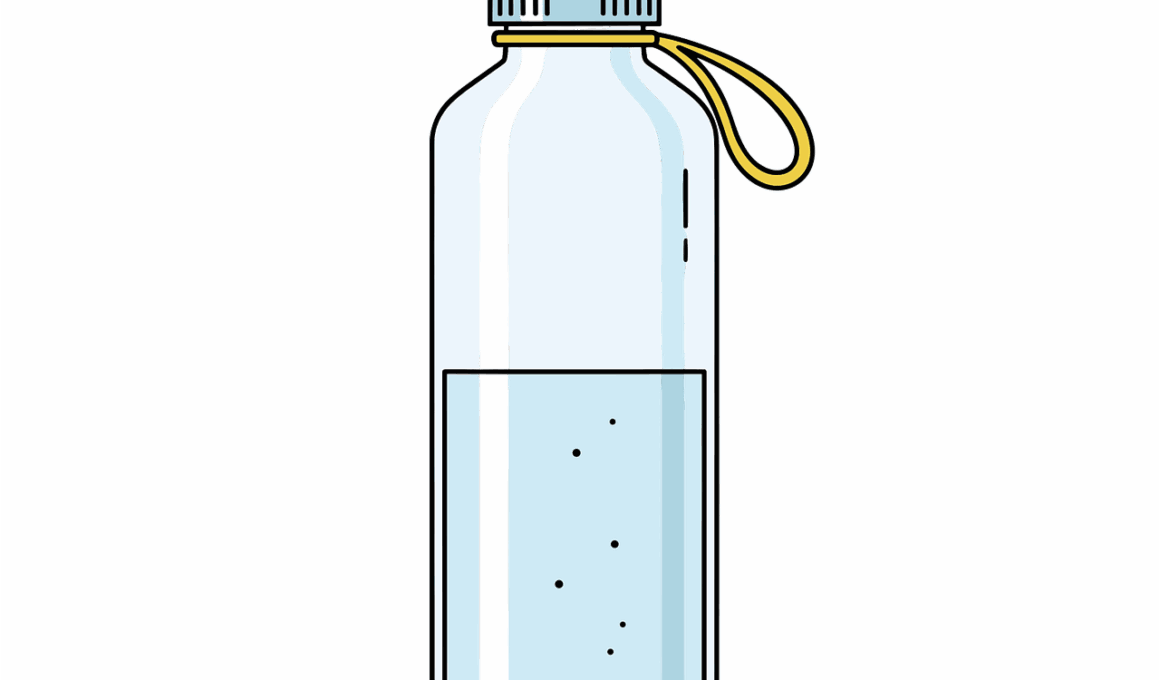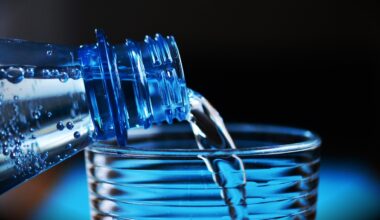Signs of Dehydration and How to Avoid Them Post-Exercise
Hydration is crucial for optimal athletic performance, particularly after intense exercise sessions. Post-workout hydration can impact recovery time and overall well-being. One of the first signs of dehydration includes dizziness or lightheadedness. This can occur when the body loses more fluids than consumed during and after physical activity. In addition to dizziness, dry mouth is a common indication that hydration levels are low. This signal is the body’s way of communicating the need for water. Fatigue is another critical sign, revealing that your body may not be replenished adequately after workouts. Muscle cramps, often resulting from electrolyte depletion, can significantly affect how you feel during recovery. It’s important to pay attention to your body’s signals. Also, the color of urine is a good indicator of hydration levels. Light yellow suggests adequate hydration, while darker urine can indicate a need for more fluids. To avoid these issues, consider employing strategies that focus on replenishment and recovery. Ensure that you drink water regularly and consume electrolyte-rich foods to maintain optimal hydration levels, ultimately enhancing exercise performance.
Understanding Hydration Needs
Understanding hydration needs is essential for post-exercise recovery and maximizing performance. Each person’s hydration requirements may vary based on factors such as body weight, exercise intensity, and environmental conditions. Therefore, recognize that athletes may require different hydration strategies than non-athletes. The general recommendation is to consume water before, during, and after a workout. However, if your session exceeds an hour or is particularly intense, you might consider sports drinks that replace lost electrolytes effectively. Pay attention to factors like climate; heat and humidity further exacerbate fluid loss. Notably, individuals participating in endurance events are at higher risk for dehydration and need to monitor fluid intake closely. An effective strategy is to develop a personalized hydration plan. This can involve estimating sweat loss during exercise through careful observation of body weight pre-and post-workout. Additionally, a good practice to consider is incorporating hydrating foods, such as fruits and vegetables. Examples of relevant foods include watermelons, cucumbers, and oranges, which provide hydration while also offering essential nutrients. Doing this can significantly aid in recovery. Always listen to your body’s cues when determining hydration needs.
Another critical aspect of hydration post-exercise is timing. Consuming fluids immediately after a workout can significantly influence recovery rates. Aim to hydrate within thirty minutes of completing your exercise. This is often termed the “golden window” for recovery, where your body is most receptive to hydration and nutrient absorption. Delaying hydration can lead to prolonged fatigue and hamper recovery efforts. If your workout was highly intense or long, consider a combination of water and an electrolyte-rich beverage to maximize recovery. Replenishing vital electrolytes like sodium and potassium is essential, as these are lost through sweat. Sports drinks, coconut water, or electrolyte tablets can help restore these minerals effectively. In addition, incorporating protein-rich foods along with hydration can stimulate muscle recovery and growth. Healthy snacks such as Greek yogurt or a protein shake serve dual purposes of nourishment and hydration. Staying mindful of your hydration strategy post-exercise prepares your body to perform well in subsequent workouts. Ensure to keep a water bottle accessible and refill it regularly to establish a consistent habit of hydrating effectively. Adapt your approach based on the specific demands of your exercises.
Identifying Dehydration Symptoms
To maintain optimal performance during workouts, identifying symptoms of dehydration is paramount. One common symptom includes persistent thirst, indicating that your body is signaling for more fluids. Aside from thirst, another noticeable sign is dry or sticky mouth, which can lead to difficulty in swallowing. Dark-colored urine serves as a strong indicator of dehydration levels, with lighter hues indicating satisfactory hydration. Additionally, fatigue and decreased endurance can hinder workouts, as dehydration significantly impacts energy levels. Notably, if you experience muscle cramps, it may indicate that your body is missing vital electrolytes. Other signs may include dizziness or weakness, especially during physical activities, revealing that your body requires immediate rehydration. Keep an eye out for signs of confusion or irritability, which can arise when hydration levels drop significantly. Paying attention to these symptoms is crucial for athletes and fitness enthusiasts alike. Being proactive in hydration habits can prevent adverse outcomes associated with dehydration. Establish a routine that incorporates hydration strategies before, during, and after workouts to ensure your body stays properly nourished and hydrated effectively. This commitment can yield beneficial results in your overall performance.
Post-exercise hydration strategies can largely determine recovery success. Emphasizing the importance of starting hydration right after the workout cannot be overstated. Keep a bottle of water readily available, as well as electrolyte-rich options for situations where intense dehydration might occur. Alongside timing, measuring hydration volume is equally significant. Consuming between 16 to 24 ounces of water for each pound lost during exercise can restore hydration balance. Employing methods such as weighing yourself pre and post-workout can help gauge fluid lost and dictate how much to drink. Additionally, smoothies with ingredients such as spinach, bananas, and protein powder serve as hydrating snacks that support replenishment. Consistently monitoring body signs throughout the recovery process enhances hydration strategies. Planning meals with high water content and combining them with hydration will enable better recovery rates and overall performance. Carrying a water bottle and setting hydration reminders throughout the day can further aid consistency in your hydration habits. These simple yet effective strategies will ensure that you retain proper hydration levels and can maintain peak physical performance during subsequent workouts.
Hydration Tips for Athletes
When it comes to hydration strategies, athletes should consider a variety of methods to optimize their post-workout recovery. First, staying ahead of hydration needs throughout the day by drinking water consistently can assist in preventing dehydration. Scheduling frequent hydration breaks during exercise can further maintain fluid levels. Secondly, diversifying liquid intake offers significant benefits. Incorporate vegetables and fruits high in water content to complement fluid replenishment, maximizing nutrient absorption. Foods like cucumbers, oranges, and berries not only provide hydration but also deliver essential vitamins beneficial for recovery. Thirdly, using a hydration tracker can enhance awareness. Whether utilizing a mobile application or a simple chart, tracking fluid intake can assist in maintaining hydration goals. Additionally, employing a personal hydration test by assessing urine color before and after workouts can serve as an effective reminder of hydration levels. Engaging in group activities or fitness classes often provides a communal setting for hydration, allowing encouragement among participants. Follow these vibrant hydration tips, and don’t hesitate to modify your approach based on personal experiences and outcomes following workouts. Being consistent builds confidence in maintaining hydration strategies.
Lastly, ensure you understand that effective hydration strategies encompass personalized approaches to nurturing your body post-exercise. Individual differences matter significantly in determining how well you recover from workouts. Track what works best for you; drink not just when thirsty but to maintain hydration throughout the day. Recognize the potential consequences of ignoring hydration needs, as inadequate intake can lead to impaired performance, muscle cramping, and even metabolic disturbances. Incorporating a variety of beverages and hydrating foods will keep your routine from becoming monotonous. Tailor hydration to your workout intensity levels; high-intensity training may require heightened fluid intake compared to lighter sessions. Make adjustments according to the climate and environment in which you’re exercising to compensate for differences in sweat rates. Develop a workflow that best suits your hydration preferences; it may involve color coding your drinking goals or setting daily reminders for water intake. Ultimately, combining different hydration techniques is one of the best ways to enhance your overall performance, health, and recovery rates. Committing to your hydration plan will be valuable in achieving your fitness objectives and ensuring longevity in your fitness journey.


